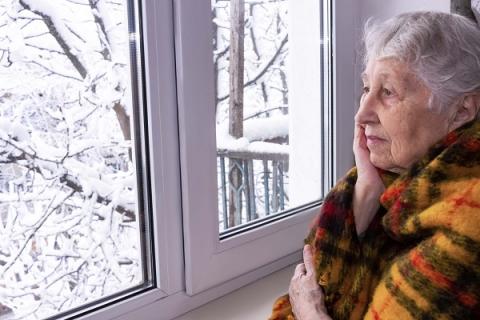Understanding Seasonal Affective Disorder (SAD)
What is seasonal affective disorder?
Seasonal affective disorder is a type of depression that usually occurs in the fall and winter when daylight decreases. Researchers believe that the lack of sunlight may disrupt your internal clock (circadian rhythm), affect serotonin levels (a brain chemical that regulates mood), and reduce melatonin (which impacts sleep). While some people may experience a reverse form during the summer, winter-onset SAD is more common.
Common symptoms of seasonal affective disorder
Symptoms of SAD typically mirror those of other forms of depression, but they recur at specific times each year.
Symptoms include:
- Feeling sad most of the day, nearly every day.
- A loss of interest in once-enjoyable activities.
- Low energy or constant fatigue, even after sufficient sleep.
- Sleeping too much or oversleeping regularly.
- Difficulty concentrating on tasks.
- Feelings of hopelessness and guilt.
- Appetite changes, especially increased cravings for carbohydrates and sugary foods.
- Thoughts of death or suicide. This is a serious symptom that requires immediate medical attention.
If you’re experiencing these symptoms, especially during the same season every year, it’s essential to consult with a healthcare provider for diagnosis and treatment.
How is seasonal affective disorder diagnosed?
To diagnose SAD, your doctor or mental health provider will evaluate your symptoms, medical history, and seasonal patterns. While there’s no specific test for SAD, they can help rule out other conditions and recommend treatment.
Treatment options for seasonal affective disorder
SAD is treatable, and several effective options help ease symptoms:
- Light therapy: Sitting near a special light box that mimics sunlight for 30 minutes a day can help regulate mood-related brain chemicals.
- Psychotherapy: Cognitive-behavioral therapy (CBT) is particularly effective for addressing negative thought patterns and developing coping strategies.
- Antidepressants: Selective serotonin reuptake inhibitors (SSRIs) may be prescribed to help balance mood.
- Vitamin D supplements: Low vitamin D levels due to reduced sunlight may worsen symptoms, so supplements may be recommended.
Self-care strategies for seasonal affective disorder
In addition to medical treatments, certain lifestyle changes can also help manage SAD:
Get exercise: Physical activity, especially outdoors, boosts mood by increasing endorphins.
Be more social: Engaging with friends and family improves emotional well-being, so make plans to spend time with loved ones.
Plan fun activities: Having something to look forward to, like hobbies or social events, helps maintain a positive outlook.
Focus on a healthy diet: Eating balanced meals with plenty of fruits, vegetables, and whole grains helps stabilize your mood.
Avoid alcohol: Alcohol can worsen depressive symptoms, so it’s best to limit or avoid it altogether.
When to seek help
If you recognize these symptoms in yourself or someone else, it’s important to talk to a healthcare provider as soon as possible. Early treatment may prevent symptoms from worsening and help you manage your mood during the darker months.
Seasonal affective disorder is manageable with the right combination of treatment and self-care. If you suspect you have SAD, don’t hesitate to reach out for help—there’s no need to face it alone.
